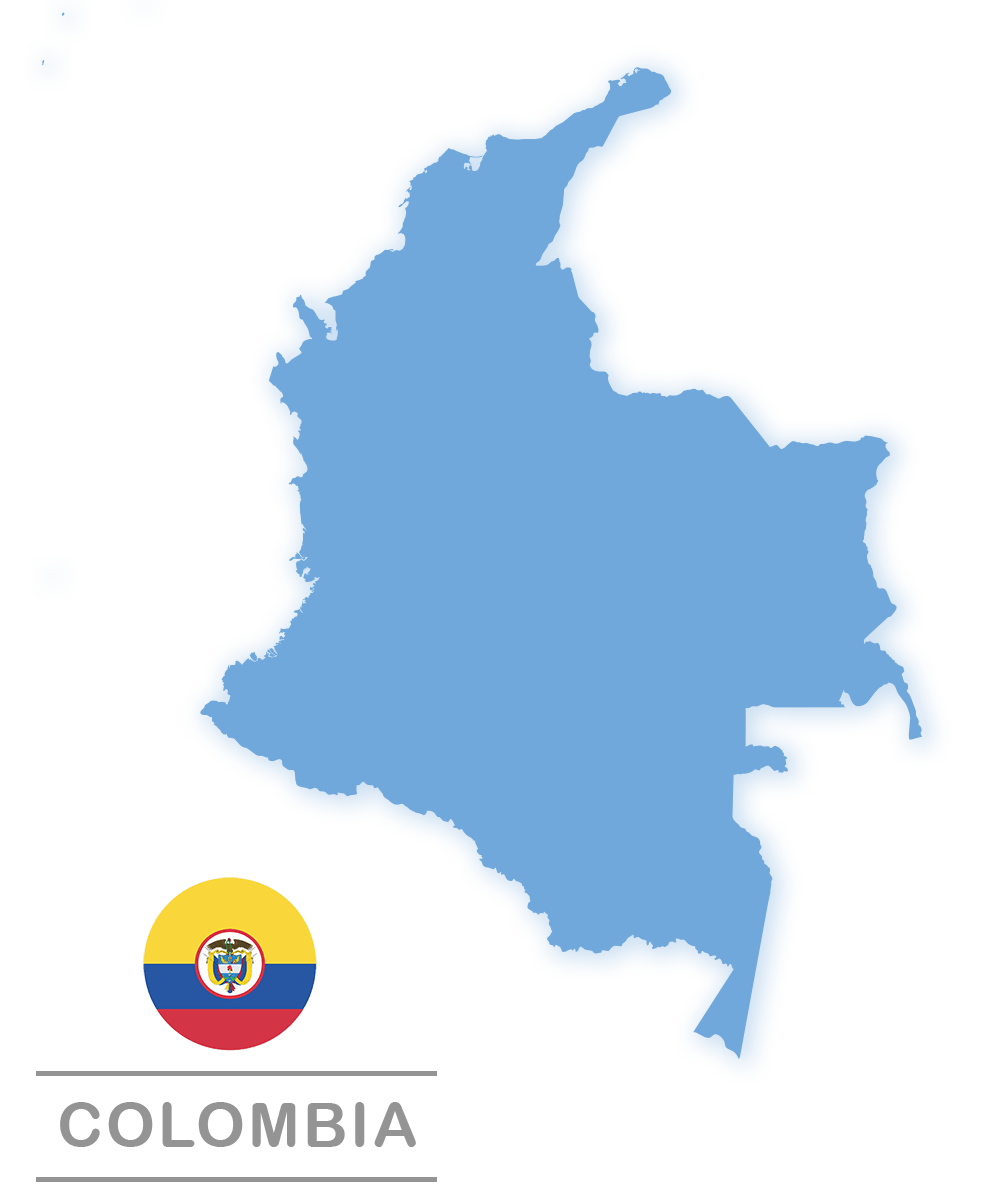Colombia Main Facts
The Andes are, by far, Colombia’s most relevant geographical feature. In the southwestern departments of Cauca and Nariño, the Andes divide in three different mountain ranges, known as ‘cordilleras.’ The Cordillera Occidental (western range), spans from the Pacific coast to Cauca Valley, followed to the east by the central range or Cordillera Central, which is bordered by the Cauca Valley to the west and the Magdalena River to the east. Finally, the Cordillera Oriental (eastern range) comprises the northeastern part of the country, running down to the Guajira Peninsula. Highest peaks in the Cordillera Occidental reach more than 4,700 m (15,500 ft.). In the central and eastern Cordilleras, they are even higher, reaching 5,000 metres (16,500 ft.) above sea level. Most of the country’s important cities spread across Colombia’s interior highlands, with Cali on the western range, Medellín, Manizales, Pereira and Armenia on the Central Cordillera and Bogotá, Bucaramanga and Cúcuta on the eastern range.
But there’s more than the Andes in Colombia. The eastern part of the country is covered by the vast savannah of the Llanos, part of the Orinoco River basin, and its southeastern corner by the Amazon forest. These two lowlands cover more than half of Colombia’s territory, although less than 6% of its population lives there. Colombia’s Caribbean coast is well known by its spectacular scenery. Nearly 22% of the country’s population live here, mainly in Cartagena and Barranquilla. This is generally an area of low-lying plains, with some exceptions, like the mountain range of Sierra Nevada de Santa Marta in the north, La Guajira Desert in the northernmost tip of the peninsula, and de densely vegetated mountains at Serranía de Baudó, next to the Panama border, on the Pacific.
There are seven main rivers in Colombia: Magdalena, Cauca, Guaviare, Atrato, Meta, Putumayo and Caquetá, with four principal drainage systems: Pacific Drain, Caribbean Drain, Orinoco Basin and Amazon Basin.

Colombia’s animal and plant diversity are mind-boggling. There are 1,957 bird species (following IOC 8.1 species list standards), 623 amphibians, 467 mammals, 518 reptiles, and roughly 3,200 species of fish. About 18% of these animals are endemic. Plants account for staggering 51,220 species with nearly 30% endemics.
Colombia boasts the highest number of orchid and bird species on Earth; it has the second highest diversity of plants, amphibians, butterflies and fresh water fish, third highest diversity of reptiles and fourth highest mammal diversity of the planet.
Colombia’s climate is generally tropical, but temperatures vary greatly with altitude, prevailing winds and rainfall. Ruled mainly by altitude, Colombia’s mountain climate zones can be divided in five. The warm altitudinal zone, with temperatures reaching more than 24°C (75°F), sits below 1,000 meters (3,300 ft.), comprising roughly 82.5% of the country’s total land area. Between 1,000 and 2,000 meters (3,300 and 6,600 ft.) there’s a temperate climate zone, with temperatures ranging between 17 and 24°C (63 and 75°F). There’s a third altitude climate zone between 2,000 and 3,000 meters (6,600 and 9,900 ft.) above sea level, with temperatures varying between 12 and 17°C (54 and 63°F). Above this, there’s a cold Alpine climate zone, where trees turn to dwarf as they reach the timberline, just below 4,000 meters (13,000 ft.) above sea level. One last glacial climate zone sits above 4,000 meters (13,000 ft.). These are barren wastelands, with permanent snow and ice. Colombia’s variable climate zones also give place to other different habitats at lower altitudes, such as tropical rainforests, savannas and steppes.
Suggested tours for Colombia
These tours give you a starting point for what your trip to Colombia could entail. They cover routes we’ve found work particularly well and feature some of our favorite places to stay. Treat them as inspiration, as each trip is created uniquely for you.


